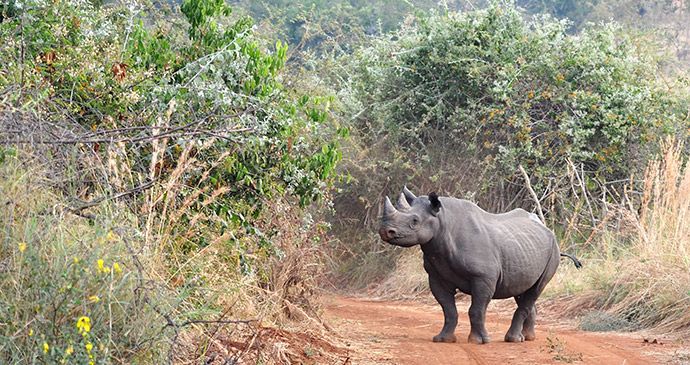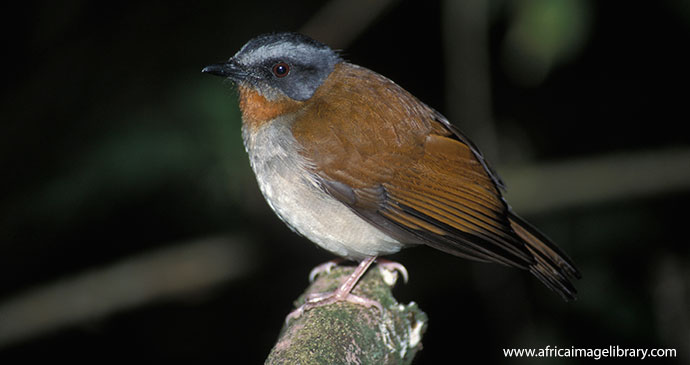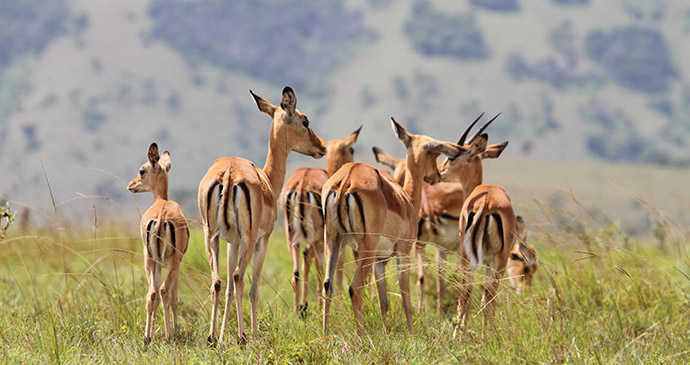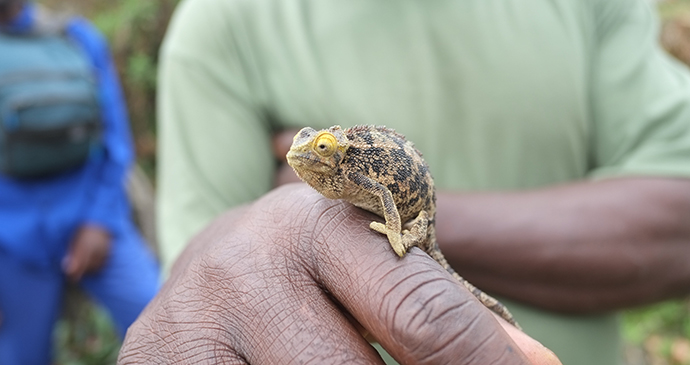From the peerless wildlife experience of tracking mountain gorillas to the recent reintroduction of rhinos to the region, Rwanda has had some real conservation success stories of late and is now a rewarding destination for game viewing.
So if you’re thinking about making your first trip abroad now that the UK red list has been significantly reduced, here’s why you should consider the ‘Land of a Thousand Hills.’
Galivant around the Virungas with gorillas
Tracking mountain gorillas in the Virungas is a peerless wildlife experience, and one of Africa’s indisputable travel highlights. It is difficult to describe the simple exhilaration attached to first setting eyes on a wild mountain gorilla.
What is truly fascinating is the extent to which the gorillas try to interact with their visitors, often approaching them, and occasionally touching one of the guides in apparent recognition and greeting as they walk past.
Volcanoes National Park has now reopened to tourists, subject to a number of safety requirements. To attract international visitors, gorilla-tracking permits have been reduced to US$1,500 until 31 December (US$200 for Rwandans and US$500 for foreign residents).
Tick seeing the Big Five off your bucket list
Visit Akagera National Park to observe the coveted Big Five. Buffalo are plentiful and easily seen, elephants are quite common but more difficult to track down, and leopards are present but secretive as ever. For the best part of two decades, lion sightings had been little more than the stuff of rumour, but with the June 2015 reintroduction of seven lions (two males and five females) flown in from reserves in South Africa, Akagera is once again home to the most charismatic member of the quintet. Two more males were brought in in 2017, and signs indicate that they’re all settling in nicely – nearly a dozen cubs have been born here since the reintroductions began.

Rhinos (last seen here in 2007), were reintroduced in May 2017 when two planeloads – 18 in all – arrived in the park. They’ve since had a calf, and in June 2019 a further five black rhinos were transported here from European wildlife parks. Prior to the COVID-19 pandemic, it had been a magnificent few years for Akagera. And now that it is reopen, we all hope that visitor numbers can start to increase and the fantastic progress can continue.
Spot bucket-list birds
Rwanda is a wonderful destination for birdwatchers, with an incredible 700 species recorded in an area smaller than Belgium and half the size of Scotland. You don’t have to be an ardent birdwatcher to appreciate some of Nyungwe’s birds. Most people, for instance, will do a double-take when they first spot a great blue turaco, a chicken-sized bird with garish blue, green and yellow feathers, often seen gliding between the trees along the main road.

Other birds impress with their bizarre appearance – the gigantic forest hornbills, for instance, whose wailing vocalisations are almost as comical as their ungainly bills and heavy-winged flight. And, when tracking through the forest undergrowth, watch out for the red-throated alethe, a very localised bird with a distinctive blue-white eyebrow. The alethe habitually follows colobus troops to eat the insects they disturb, and it appears to see humans as merely another large mammal, often perching within a few inches!
Spring into action alongside antelopes
The 11 antelope species in Akagera range from the eland, the world’s largest antelope, through to the diminutive common duiker. The most common, however, is the impala, a slim handsome antelope which bears a superficial similarity to the gazelles, but belongs to a separate family. It is commonly sighted in the woodland around and between the lakes of Akagera. The Defassa waterbuck is a large, shaggy brown antelope with a distinctive white rump. The waterbuck inhabits practically any type of woodland or grassland provided that it is close to water, and it is probably the most common large antelope after impala in the far south of Akagera.

Very common in the north of the park and in the Mutumba Hills, the topi or tsessebe is a large, slender dark-brown antelope with striking yellow lower legs. Oddly, the herds of topi in northern Akagera seem to be far larger than those found in the Serengeti ecosystem.
Search for Rwanda’s most intruiging reptile
Common and widespread in Rwanda, but not easily seen unless they are actively searched for, chameleons are arguably the most intriguing of African reptiles. Most of Rwanda’s chameleons are forest species associated with Nyungwe National Park. You’re most likely to come across a chameleon by chance when it is crossing a road, in which case it should be easy to take a closer look at it, since most chameleons move painfully slowly and deliberately.

Chameleons are also often seen on night game drives, when their ghostly nocturnal colouring shows up clearly under a spotlight – making it pretty clear why these strange creatures are regarded with both fear and awe in many local African cultures. More actively, you could ask your guide if they know where to find a chameleon – a few individuals will be resident in most lodge grounds.
More information
To find out more about Rwanda’s unique wildlife, discover our comprehensive travel guide: